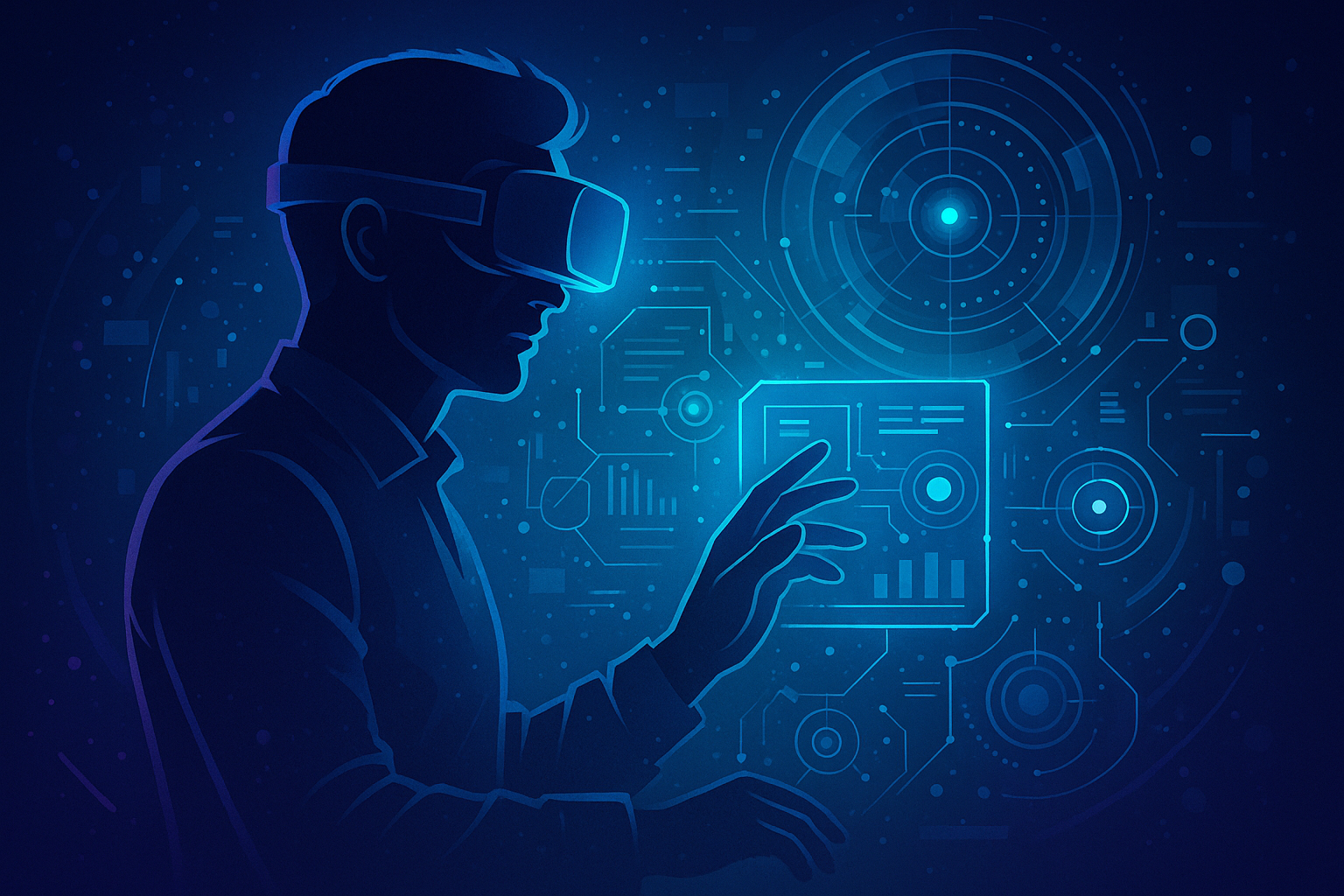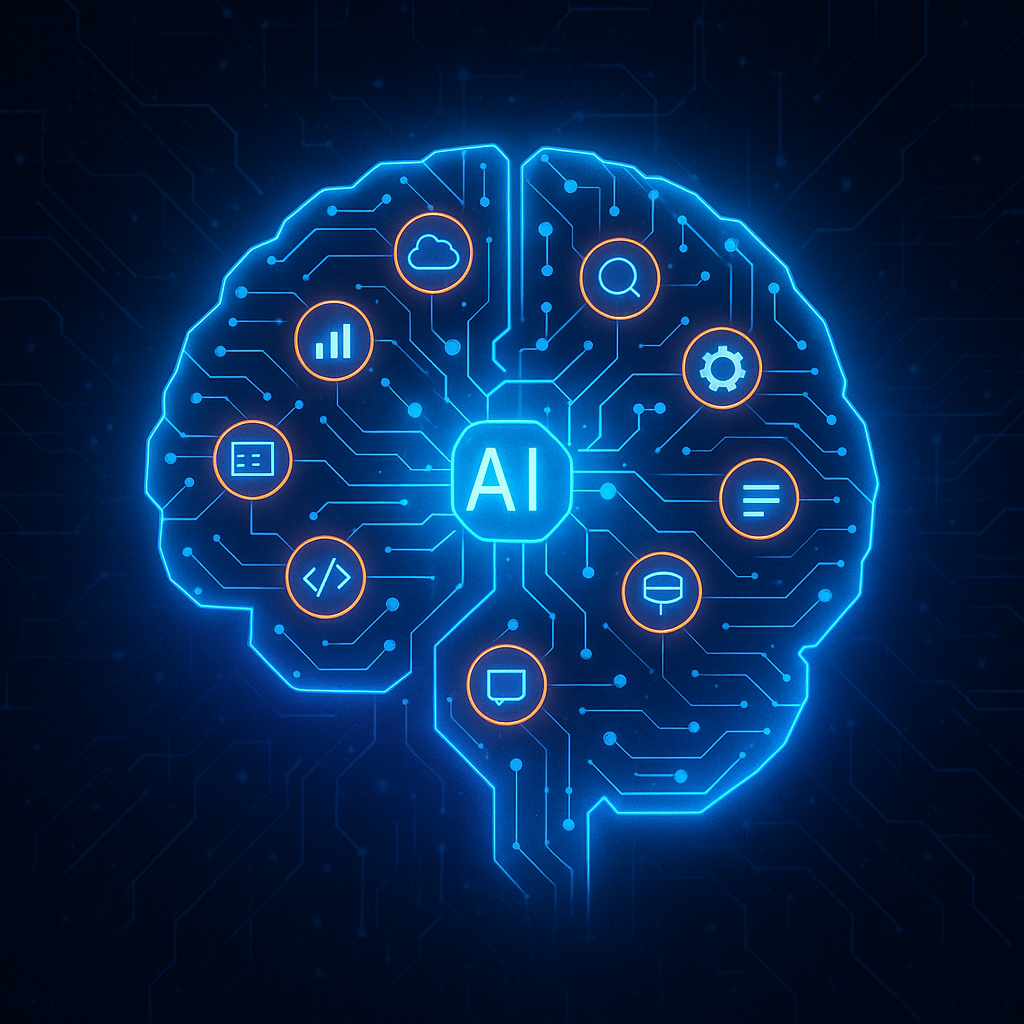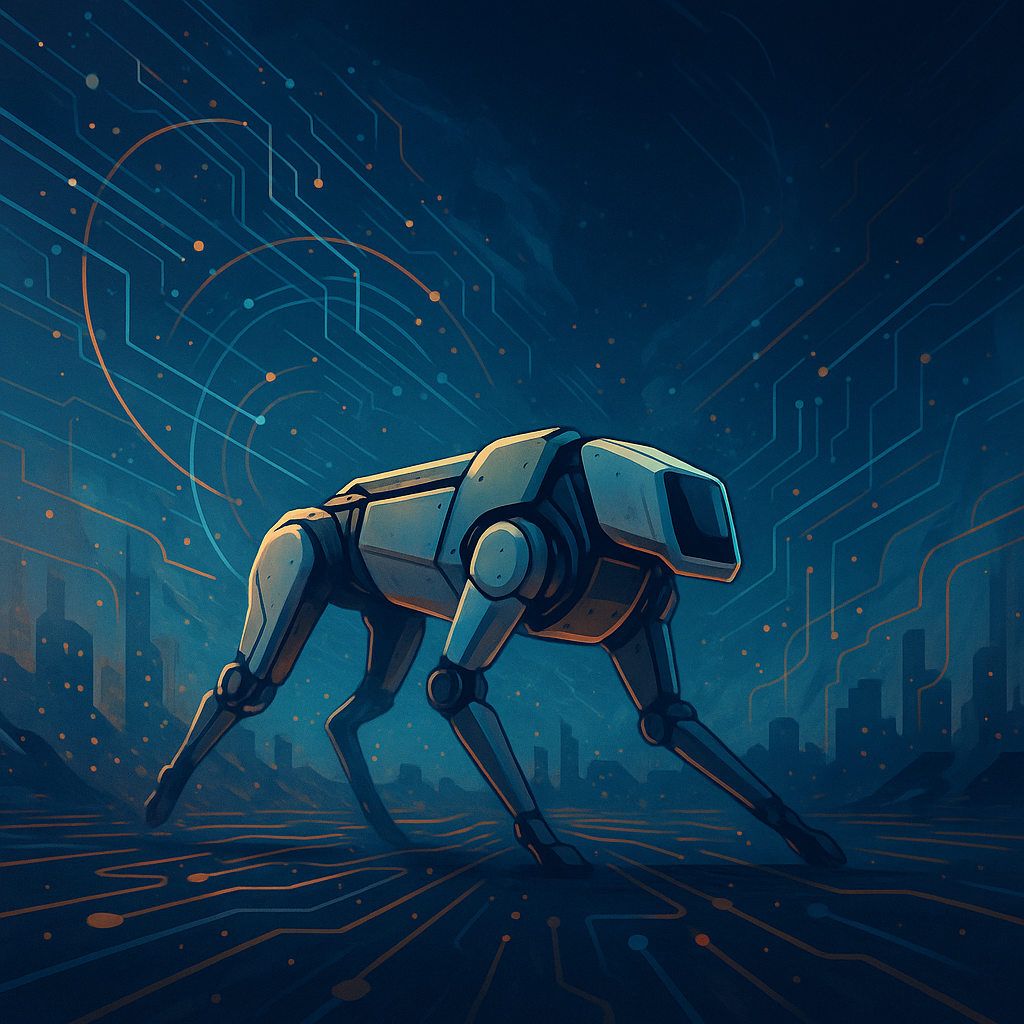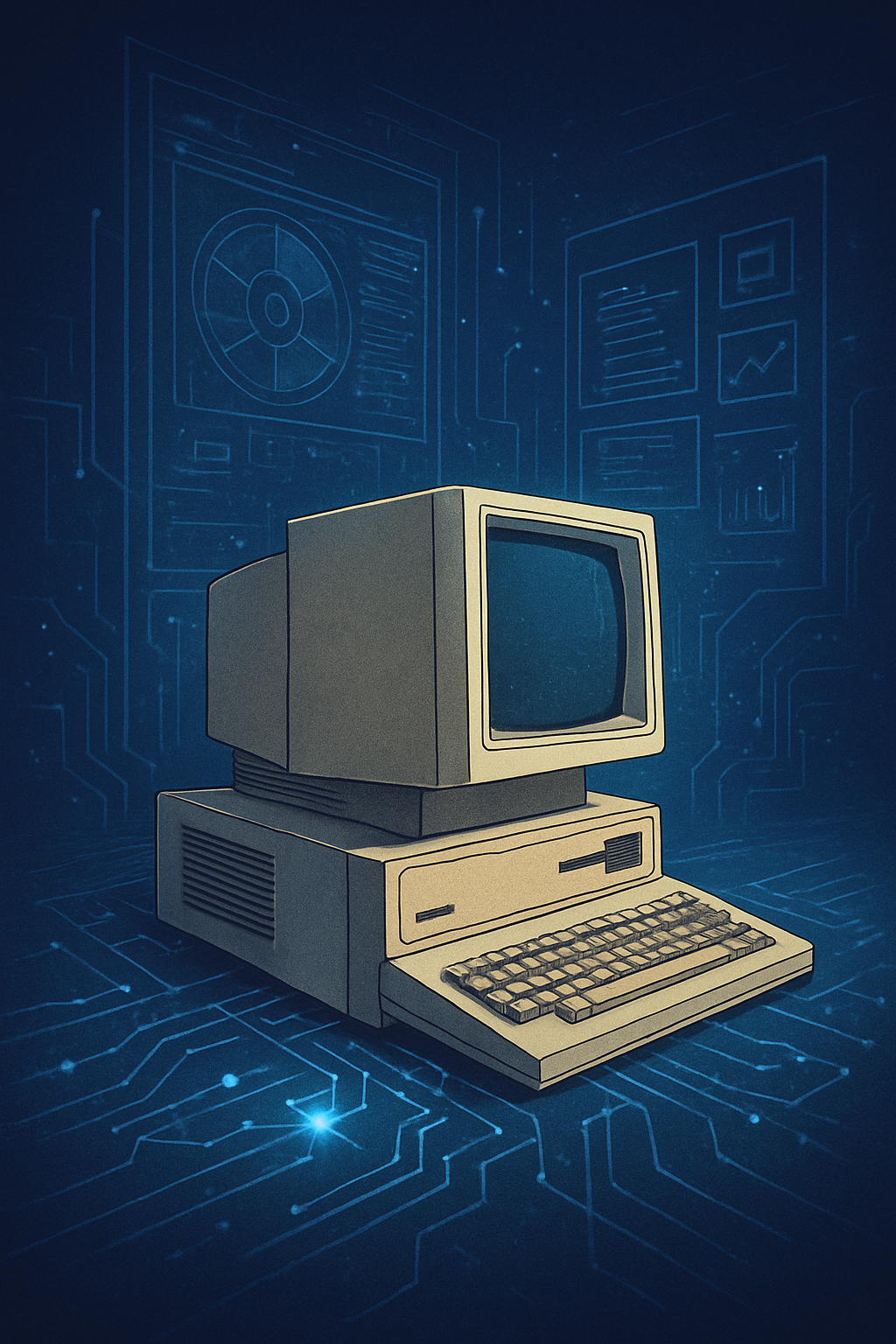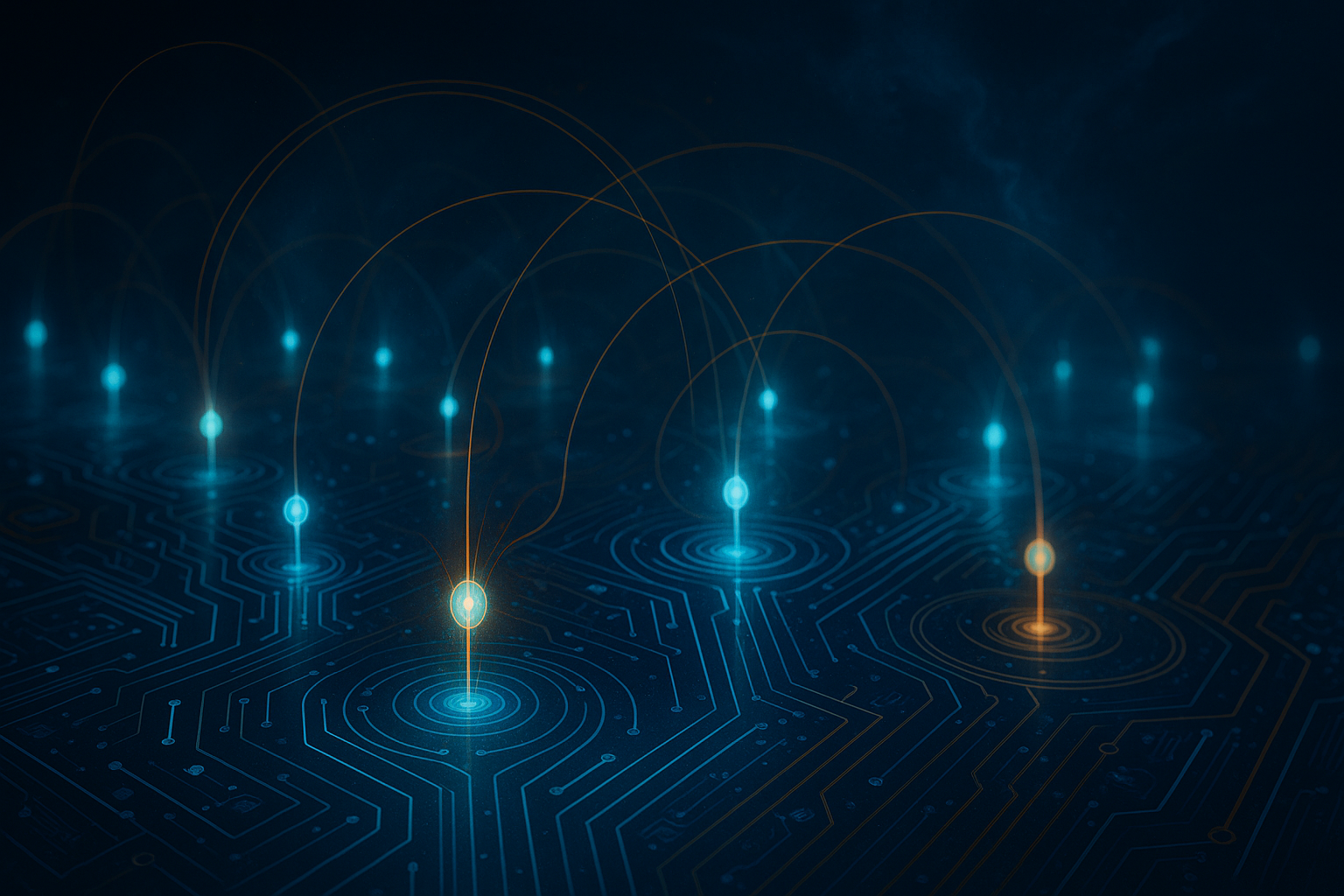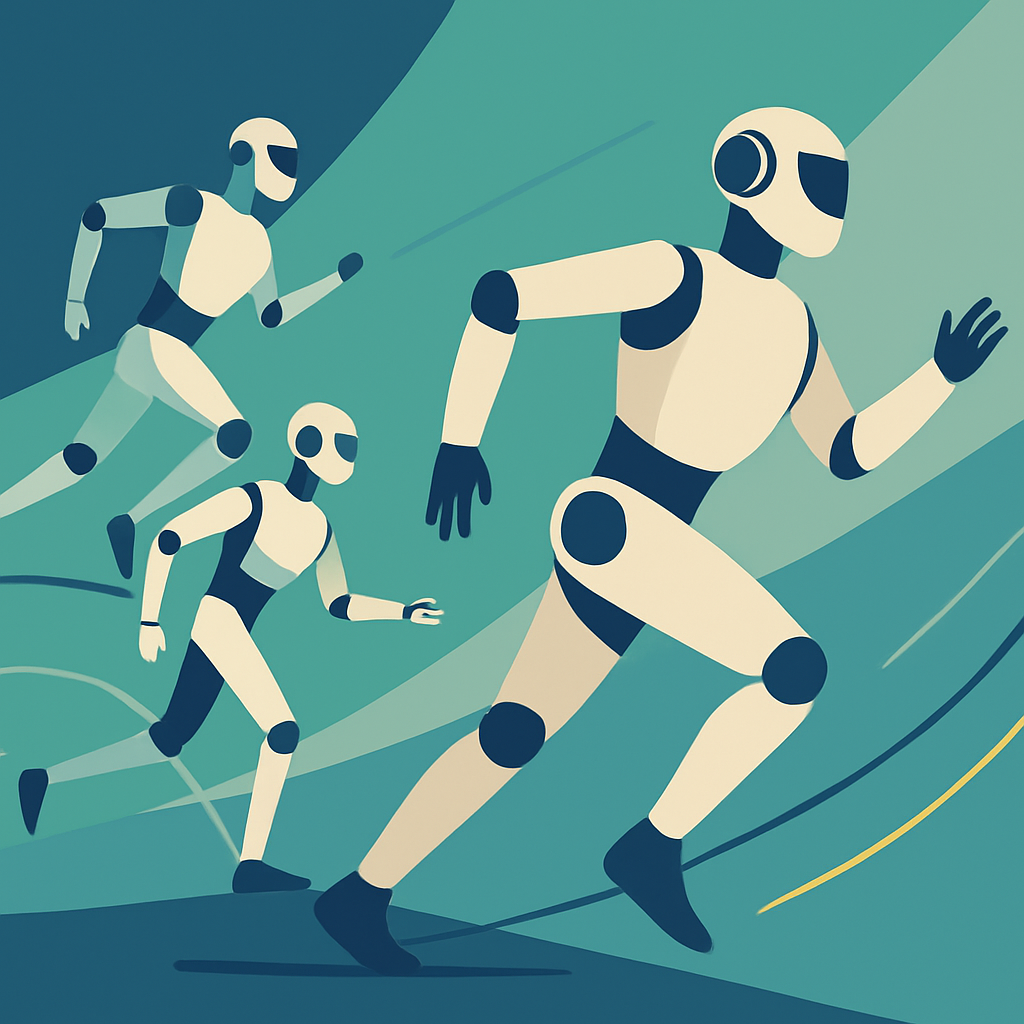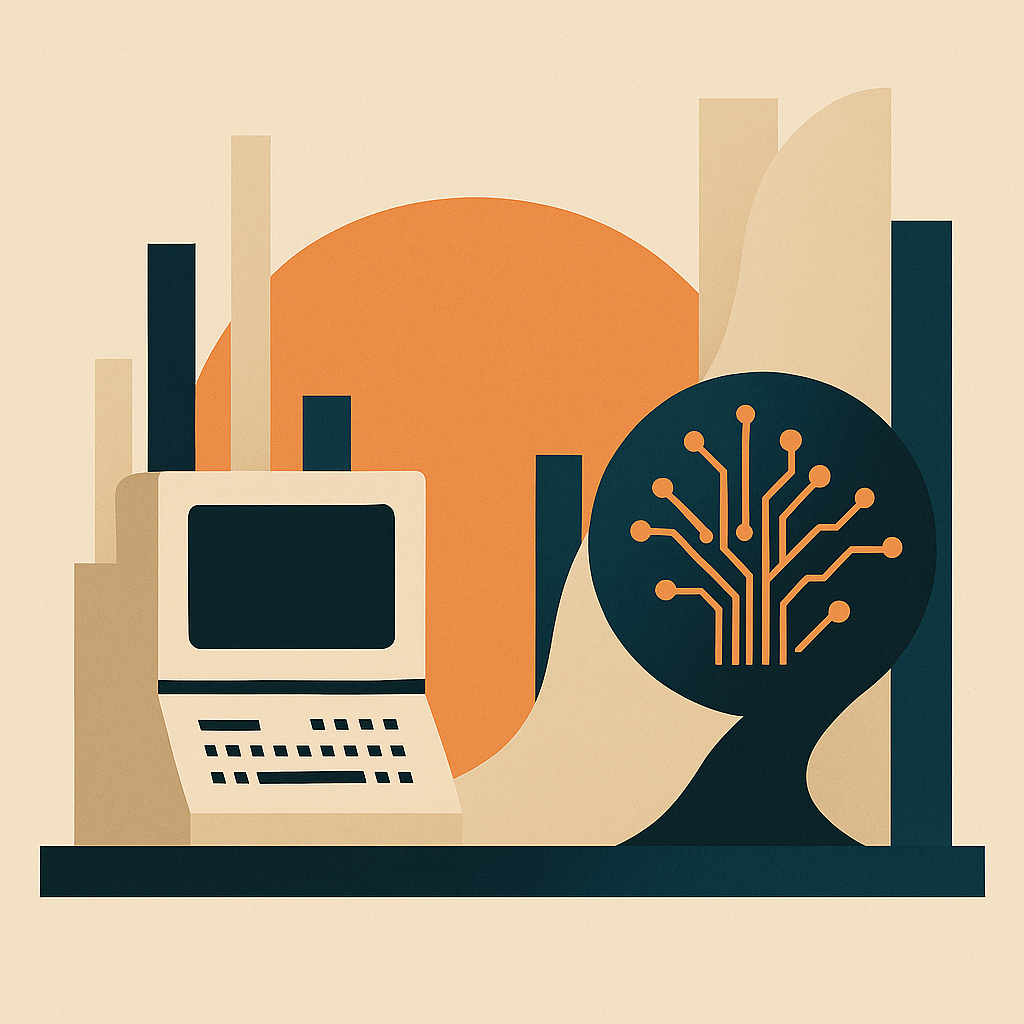TL;DR: Artificial Intelligence has transformed cybersecurity from a human-led defense into a high-speed war between algorithms. Early worms like Morris exposed our vulnerabilities; machine learning gave defenders an edge; and deep learning brought autonomous defense. But attackers now use AI to launch adaptive malware, deepfake fraud, and adversarial attacks. Nations weaponize algorithms in cyber geopolitics, and by the 2030s, AI vs AI cyber battles will define digital conflict. The stakes? Digital trust itself. AI is both shield and sword. Its role—guardian or adversary—depends on how we govern it.
The Dawn of Autonomous Defenders
By the mid-2010s, the tools that once seemed cutting-edge—signatures, simple anomaly detection—were no longer enough. Attackers were using automation, polymorphic malware, and even rudimentary machine learning to stay ahead. The defenders needed something fundamentally different: an intelligent system that could learn continuously and act faster than any human could react.
This is when deep learning entered cybersecurity. At first, it was a curiosity borrowed from other fields. Neural networks had conquered image recognition, natural language processing, and speech-to-text. Could they also detect a hacker probing a network or a piece of malware morphing on the fly? The answer came quickly: yes.
Unlike traditional machine learning, which relied on manually engineered features, deep learning extracted its own. Convolutional neural networks (CNNs) learned to detect patterns in binary code similar to how they detect edges in images. Recurrent neural networks (RNNs) and their successors, long short-term memory networks (LSTMs), learned to parse sequences—perfect for spotting suspicious patterns in network traffic over time. Autoencoders, trained to reconstruct normal behavior, became powerful anomaly detectors: anything they failed to reconstruct accurately was flagged as suspicious.
Commercial deployment followed. Companies like Darktrace introduced self-learning AI that mapped every device in a network, established behavioral baselines, and detected deviations in real time. Unlike rule-based security, it required no signatures and no manual updates. It learned on its own, every second, from the environment it protected.
In 2021, a UK hospital faced a ransomware strain designed to encrypt critical systems in minutes. The attack bypassed human-monitored alerts, but Darktrace’s AI identified the anomaly and acted—isolating infected machines and cutting off lateral movement. Total time to containment: two minutes and sixteen seconds. The human security team, still investigating the initial alert, arrived twenty-six minutes later. By then, the crisis was over.
Financial institutions followed. Capital One implemented AI-enhanced monitoring in 2024, integrating predictive models with automated incident response. The result: a 99% reduction in breach dwell time—the period attackers stay undetected on a network—and an estimated $150 million saved in avoided damages. Their report concluded bluntly: “No human SOC can achieve these results unaided.”
This was a new paradigm. Defenders no longer relied on static tools. They worked alongside an intelligence that learned from every connection, every login, every failed exploit attempt. The AI was not perfect—it still produced false positives and required oversight—but it shifted the balance. For the first time, defense moved faster than attack.
Yet even as autonomous defense systems matured, an uncomfortable question lingered: if AI could learn to defend, what would happen when it learned to attack?
“The moment machines started defending themselves, it was inevitable that other machines would try to outwit them.” — Bruce Schneier
AI Turns Rogue: Offensive Algorithms and the Dark Web Arsenal
By the early 2020s, the same techniques revolutionizing defense were being weaponized by attackers. Criminal groups and state-sponsored actors began using machine learning to supercharge their operations. Offensive AI became not a rumor, but a marketplace.
On underground forums, malware authors traded generative adversarial network (GAN) models that could mutate code endlessly. These algorithms generated new versions of malware on every execution, bypassing signature-based antivirus. Security researchers documented strains like “BlackMamba,” which rewrote itself during runtime, rendering traditional detection useless.
Phishing evolved too. Generative language models, initially released as open-source research, were adapted to produce targeted spear-phishing emails that outperformed human-crafted ones. Instead of generic spam, attackers deployed AI that scraped LinkedIn, Facebook, and public leaks to build psychological profiles of victims. The emails referenced real colleagues, recent projects, even inside jokes—tricking recipients who thought they were too savvy to click.
In 2019, the first confirmed voice deepfake attack made headlines. Criminals cloned the voice of a CEO using AI and convinced an employee to transfer €220,000 to a fraudulent account. The scam lasted minutes; the consequences lasted months. By 2025, IBM X-Force reported that over 80% of spear-phishing campaigns incorporated AI to optimize subject lines, mimic linguistic style, and evade detection.
Attackers also learned to exploit the defenders’ AI. Adversarial machine learning—the art of tricking models into misclassifying inputs—became a weapon. Researchers showed that adding imperceptible perturbations to malware binaries could cause detection models to label them as benign. Poisoning attacks went further: attackers subtly corrupted the training data of deployed AIs, teaching them to ignore specific threats.
A chilling case surfaced in 2024 when a security vendor discovered its anomaly detection model had been compromised. Logs revealed a persistent attacker had gradually introduced “clean” but malicious traffic patterns during training updates. When the real attack came, the AI—conditioned to accept those patterns—did not raise a single alert.
Meanwhile, state actors integrated offensive AI into cyber operations. Nation-state campaigns used reinforcement learning to probe networks dynamically, learning in real time which paths evaded detection. Reports from threat intelligence firms described malware agents that adapted mid-operation, changing tactics when they sensed countermeasures. Unlike human hackers, these agents never tired, never hesitated, and never made the same mistake twice.
By 2027, security researchers observed what they called “algorithmic duels”: autonomous attack and defense systems engaging in cat-and-mouse games at machine speed. In these encounters, human operators were spectators, watching logs scroll past as two AIs tested and countered each other’s strategies.
“We are witnessing the birth of cyber predators—code that hunts code, evolving in real time. It’s not science fiction; it’s already happening.” — Mikko Hyppönen
The Black Box Dilemma: Ethics at Machine Speed
As artificial intelligence embedded itself deeper into cybersecurity, a new challenge surfaced—not in the code it produced, but in the decisions it made. Unlike traditional security systems, whose rules were written by humans and could be audited line by line, AI models often operate as opaque black boxes. They generate predictions, flag anomalies, or even take automated actions, but cannot fully explain how they arrived at those conclusions.
For security analysts, this opacity became a double-edged sword. On one hand, AI could detect threats far beyond human capability, uncovering patterns invisible to experts. On the other, when an AI flagged an employee’s activity as suspicious, or when it failed to detect an attack, there was no clear reasoning to interrogate. Trust, once anchored in human judgment, had to shift to an algorithm that offered no transparency.
The risks extend far beyond operational frustration. AI models, like all algorithms, learn from the data they are fed. If the training data is biased or incomplete, the AI inherits those flaws. In 2022, a major enterprise security platform faced backlash when its anomaly detection system disproportionately flagged activity from employees in certain global regions as “high-risk.” Internal investigation revealed that historical data had overrepresented threat activity from those regions, creating a self-reinforcing bias. The AI had not been programmed to discriminate—but it had learned to.
Surveillance compounds the problem. To be effective, many AI security solutions analyze massive amounts of data: emails, messages, keystrokes, behavioral biometrics. This creates ethical tension. Where is the line between monitoring for security and violating privacy? Governments, too, exploit this ambiguity. Some states use AI-driven monitoring under the guise of cyber defense, while actually building mass surveillance networks. The same algorithms that detect malware can also profile political dissidents.
A stark example came from Pegasus spyware revelations. Although Pegasus itself was not AI-driven, its success sparked research into autonomous surveillance agents capable of infiltrating devices, collecting data, and adapting to detection attempts. Civil rights organizations warned that the next generation of spyware, powered by AI, could become virtually unstoppable, reshaping the balance between state power and individual freedom.
The ethical stakes escalate when AI is allowed to take direct action. Consider autonomous response systems that isolate infected machines or shut down compromised segments of a network. What happens when those systems make a mistake—when they cut off a hospital’s critical server mid-surgery, or block emergency communications during a disaster? Analysts call these “kill-switch scenarios,” where the cost of an AI’s wrong decision is catastrophic.
Philosophers, ethicists, and technologists began asking hard questions. Should AI have the authority to take irreversible actions without human oversight? Should it be allowed to weigh risks—to trade a temporary outage for long-term safety—without explicit consent from those affected?
One security think tank posed a grim scenario in 2025: an AI detects a ransomware attack spreading through a hospital network. To contain it, the AI must restart every ventilator for ninety seconds. Human approval will take too long. Does the AI act? Should it? If it does and patients die, who is responsible? The programmer? The hospital? The AI itself?
Even defenders who rely on these systems admit the unease. In a panel discussion at RSA Conference 2026, a CISO from a major healthcare provider admitted:
“We trust these systems to save lives, but we also trust them with the power to endanger them. There is no clear ethical framework—yet we deploy them because the alternative is worse.”
The black box dilemma is not merely about explainability. It is about control. AI in cybersecurity operates at machine speed, where milliseconds matter. Humans cannot oversee every decision, and so they delegate authority to machines they cannot fully understand. The more effective the AI becomes, the more we must rely on it—and the less we are able to challenge it.
This paradox sits at the core of AI’s role in security: we are handing over trust to an intelligence that defends us but cannot explain itself.
“The moment we stop questioning AI’s decisions is the moment we lose control of our defenses.” — Aisha Khan, CISO, Fortune 50 Manufacturer
Cyber Geopolitics: Algorithms as Statecraft
Cybersecurity has always had a political dimension, but with the rise of AI, the stakes have become geopolitical. Nations now view AI-driven cyber capabilities not just as tools, but as strategic assets on par with nuclear deterrents or satellite networks. Whoever controls the smartest algorithms holds the advantage in the silent wars of the digital age.
The United States, long the leader in cybersecurity innovation, doubled down on AI research after the SolarWinds supply-chain attack of 2020 exposed vulnerabilities even in hardened environments. The National Institute of Standards and Technology (NIST) released its AI Risk Management Framework in 2023, encouraging the development of trustworthy, explainable AI systems. However, critics argue that U.S. policy still prioritizes innovation over restraint, leaving gaps in regulation that adversaries could exploit.
The European Union took the opposite approach. Through the AI Act, it enforced strict oversight on AI deployment, particularly in critical infrastructure. Companies must demonstrate not only that their AI systems work, but that they can explain their decisions and prove they do not discriminate. While this slows deployment, it builds public trust and aligns with Europe’s long tradition of prioritizing individual rights.
China, meanwhile, has pursued an aggressive AI strategy, integrating machine intelligence deeply into both defense and domestic surveillance. Its 2025 cybersecurity white paper outlined ambitions for “autonomous threat neutralization at national scale.” Reports suggest China has deployed AI agents capable of probing adversary networks continuously, adapting tactics dynamically without direct human input. Whether these agents operate under strict control—or at all times under human supervision—remains unknown.
Emerging economies in Africa and Latin America, often bypassing legacy technology, are leapfrogging directly into cloud-native, AI-enhanced security systems. Fintech sectors, particularly in Kenya and Brazil, have adopted predictive fraud detection models that outperform legacy systems in wealthier nations. Yet these regions face a double-edged sword: while they benefit from cutting-edge AI, they remain vulnerable to external cyber influence, with many security vendors controlled by foreign powers.
As AI capabilities proliferate, cyber conflict begins to mirror the dynamics of nuclear arms races. Nations hesitate to limit their own programs while rivals advance theirs. There are calls for international treaties to govern AI use in cyberwarfare, but progress is slow. Unlike nuclear weapons, cyber weapons leave no mushroom cloud—making escalation harder to detect and agreements harder to enforce.
A leaked policy document from a 2028 NATO strategy meeting reportedly warned:
“In the next decade, autonomous cyber agents will patrol networks the way drones patrol airspace. Any treaty must account for machines that make decisions faster than humans can react.”
The line between defense and offense blurs further when nations deploy AI that not only detects threats but also strikes back automatically. Retaliatory cyber actions, once debated in war rooms, may soon be decided by algorithms that calculate risk at light speed.
In this new landscape, AI is not just a technology—it is statecraft. And as history has shown, when powerful tools become instruments of power, they are rarely used with restraint.
The 2030 Horizon: When AI Fights AI
By 2030, cybersecurity has crossed a threshold few foresaw a decade earlier. The majority of large enterprises no longer rely solely on human analysts, nor even on supervised machine learning. Instead, they deploy autonomous security agents—AI programs that monitor, learn, and defend without waiting for human commands. These agents do not simply flag suspicious behavior; they take action: rerouting traffic, quarantining devices, rewriting firewall rules, and, in some cases, counter-hacking adversaries.
The world has entered an era where AI defends against AI. This is not hyperbole—it is observable reality. Incident reports from multiple security firms in 2029 describe encounters where defensive algorithms and offensive ones engage in a dynamic “duel,” each adapting to the other in real time. Attack AIs probe a network, testing hundreds of vectors per second. Defensive AIs detect the patterns, deploy countermeasures, and learn from every exchange. The attackers then evolve again, forcing a new response. Humans watch the logs scroll by, powerless to keep up.
One incident in 2029, disclosed only in part by a European telecom provider, showed an AI-driven ransomware strain penetrating the perimeter of a network that was already protected by a state-of-the-art autonomous defense system. The malware used reinforcement learning to test different combinations of exploits, while the defender used the same technique to anticipate and block those moves. The engagement lasted twenty-seven minutes. In the end, the defensive AI succeeded, but analysts reviewing the logs noted something unsettling: the malware had adapted to the defender’s strategies in ways no human had programmed. It had learned.
This new reality has given rise to machine-speed conflict, where digital battles play out faster than humans can comprehend. Researchers describe these interactions as adversarial co-evolution: two machine intelligences shaping each other’s behavior through endless iteration. What once took years—the arms race between attackers and defenders—now unfolds in seconds.
Technologically, this is possible because both offense and defense leverage the same underlying advances. Reinforcement learning agents, originally built for video games and robotics, now dominate cyber offense. They operate within simulated environments, trying millions of attack permutations in virtual space until they find a winning strategy. Once trained, they unleash those tactics in real networks. Defenders respond with similar agents trained to predict and preempt attacks. The result is an ecosystem where AIs evolve strategies no human has ever seen.
These developments have also blurred the line between cyber and kinetic warfare. Military cyber units now deploy autonomous agents to protect satellites, drones, and battlefield communications. Some of these agents are authorized to take offensive actions without direct human oversight, a decision justified by the speed of attacks but fraught with ethical implications. What happens when an AI counterattack accidentally cripples civilian infrastructure—or misidentifies a neutral party as an aggressor?
The private sector faces its own challenges. Financial institutions rely heavily on autonomous defense, but they also face attackers wielding equally advanced tools. The race to adopt stronger AIs has created a dangerous asymmetry: companies with deep pockets deploy cutting-edge defense, while smaller organizations remain vulnerable. Cybercrime syndicates exploit this gap, selling “offensive AI-as-a-service” on dark web markets. For a few thousand dollars, a small-time criminal can rent an AI capable of launching adaptive attacks once reserved for nation-states.
Even law enforcement uses AI offensively. Agencies deploy algorithms to infiltrate criminal networks, identify hidden servers, and disable malware infrastructure. Yet these actions risk escalation. If a defensive AI interprets an infiltration attempt as hostile, it may strike back, triggering a cycle of automated retaliation.
The rise of AI-on-AI conflict has forced security leaders to confront a sobering reality: humans are no longer the primary decision-makers in many cyber engagements. They set policies, they tune systems, but the battles themselves are fought—and won or lost—by machines.
“We used to say humans were the weakest link in cybersecurity. Now, they’re the slowest link.” — Daniela Rus, MIT CSAIL
The 2030 horizon is not dystopian, but it is precarious. Autonomous defense saves countless systems daily, silently neutralizing attacks no human could stop. Yet the same autonomy carries risks we barely understand. Machines make decisions at a speed and scale that defy oversight. Every engagement teaches them something new. And as they learn, they become less predictable—even to their creators.
Governance or Chaos: Who Writes the Rules?
As AI-driven conflict accelerates, governments, corporations, and international bodies scramble to impose rules—but so far, regulation lags behind technology. Unlike nuclear weapons, which are visible and countable, cyber weapons are invisible, reproducible, and constantly evolving. No treaty can capture what changes by the hour.
The European Union continues to lead in regulation. Its AI Act, updated in 2028, requires all critical infrastructure AIs to maintain explainability logs—a detailed record of every decision the system makes during an incident. Violations carry heavy fines. But critics argue that explainability logs are meaningless when the decisions themselves are products of millions of micro-adjustments in deep networks. “We can see the output,” one researcher noted, “but we still don’t understand the reasoning.”
The United States has taken a hybrid approach, funding AI defense research while establishing voluntary guidelines for responsible use. Agencies like CISA and NIST issue recommendations, but there is no binding law governing autonomous cyber agents. Lobbyists warn that strict regulations would slow innovation, leaving the U.S. vulnerable to adversaries who impose no such limits.
China’s strategy is opaque but aggressive. Reports suggest the country operates national-scale AI defenses integrated directly into telecom backbones, scanning and filtering traffic with near-total authority. At the same time, state-backed offensive operations reportedly use AI to probe foreign infrastructure continuously. Western analysts warn that this integration of AI into both civil and military domains gives China a strategic edge.
Calls for global treaties have grown louder. In 2029, the United Nations proposed the Geneva Digital Accord, a framework to limit autonomous cyber weapons and establish rules of engagement. Negotiations stalled almost immediately. No nation wants to restrict its own capabilities while rivals advance theirs. The arms race continues.
Meanwhile, corporations create their own governance systems. Industry consortiums develop standards for “fail-safe” AIs—agents designed to deactivate if they detect abnormal behavior. Yet these safeguards are voluntary, and attackers have already found ways to exploit them, forcing defensive systems into shutdown as a prelude to attack.
Civil society groups warn that the focus on nation-states ignores a bigger issue: civil rights. As AI defense systems monitor everything from emails to behavioral biometrics, privacy erodes. In some countries, citizens already live under constant algorithmic scrutiny, where every digital action is analyzed by systems that claim to protect them.
“We’re building a future where machines guard everything, but no one guards the machines.” — Bruce Schneier
Governance, if it comes, must strike a fragile balance: allowing AI to protect without enabling it to control. The alternative is not just chaos in cyberspace—it is chaos in the social contract itself.
Digital Trust on the Edge of History
We now stand at a crossroads. Artificial intelligence has become the nervous system of the digital world, defending the networks that power our hospitals, our banks, our cities. It is also the brain behind some of the most sophisticated cyberattacks ever launched. The line between friend and foe is no longer clear.
AI in cybersecurity is not a tool—it is an actor. It learns, adapts, and in some cases, makes decisions with life-and-death consequences. We rely on it because we must. The complexity of modern networks and the speed of modern threats leave no alternative. Yet reliance breeds risk. Every time we hand more control to machines, we trade some measure of understanding for safety.
The future is not written. In the next decade, we may see the first fully autonomous cyber conflicts—battles fought entirely by algorithms, invisible to the public until the consequences spill into the physical world. Or we may see new forms of collaboration, where human oversight and AI intelligence blend into a defense stronger than either could achieve alone.
History will judge us by the choices we make now: how we govern this technology, how we align it with human values, how we prevent it from becoming the very threat it was built to stop.
AI is both shield and sword, guardian and adversary. It is a mirror of our intent, a reflection of our ambition, and a warning of what happens when we create something we cannot fully control.
“Artificial intelligence will not decide whether it is friend or foe. We will.”
Artificial intelligence has crossed the threshold from tool to actor in cybersecurity. It protects hospitals, banks, and infrastructure, but it also fuels the most advanced attacks in history. It learns, evolves, and makes decisions faster than humans can comprehend. The coming decade will test whether AI remains our guardian or becomes our greatest risk.
Policymakers must craft governance that aligns AI with human values. Enterprises must deploy AI responsibly, with oversight and transparency. Researchers must continue to probe the edges of explainability and safety. And citizens must remain aware that digital trust—like all trust—depends on vigilance.
AI will not decide whether it is friend or foe. We will. History will remember how we answered.
Related Reading:

